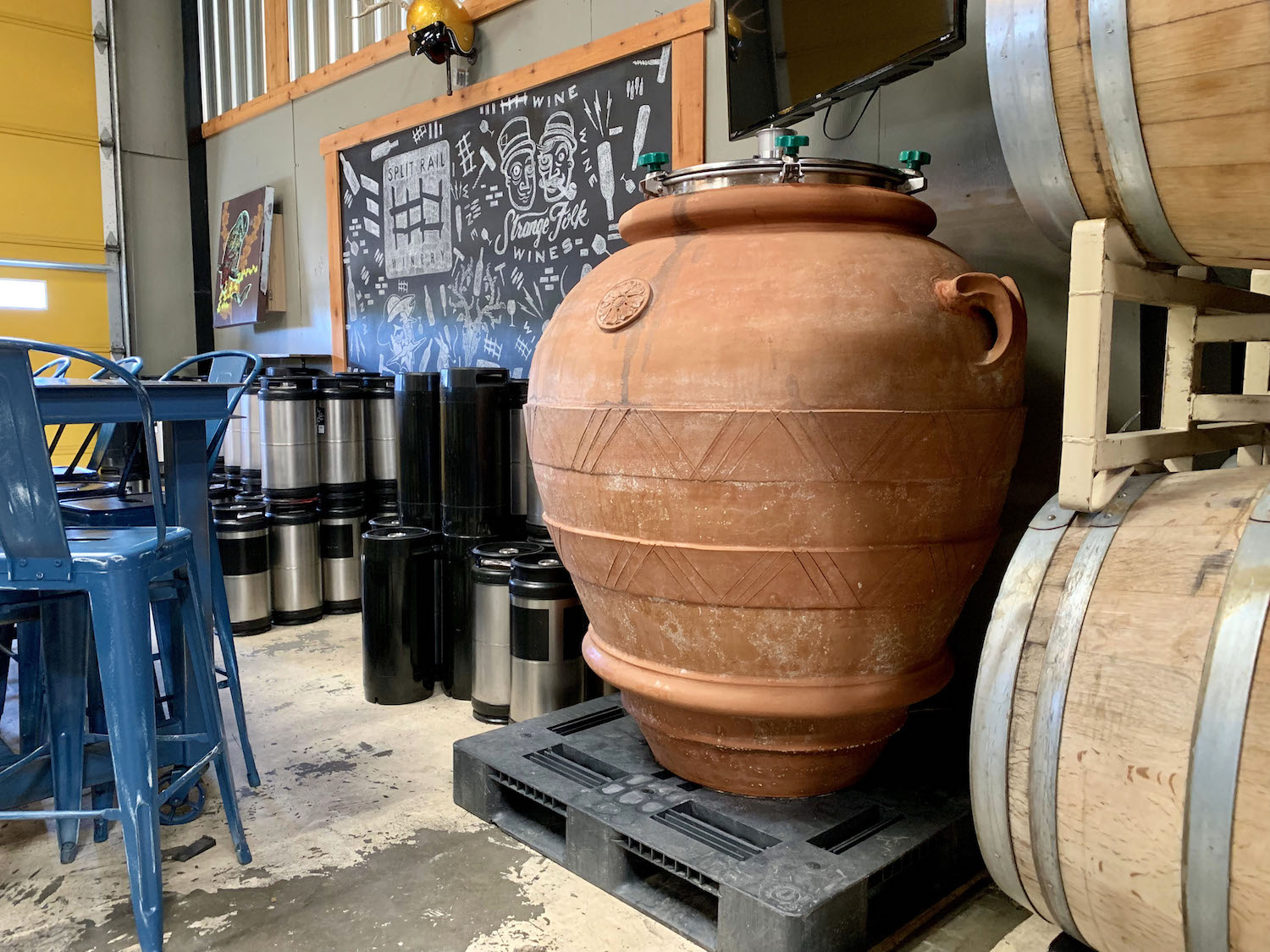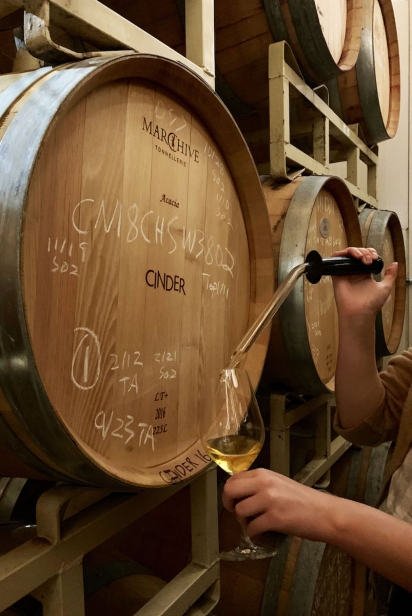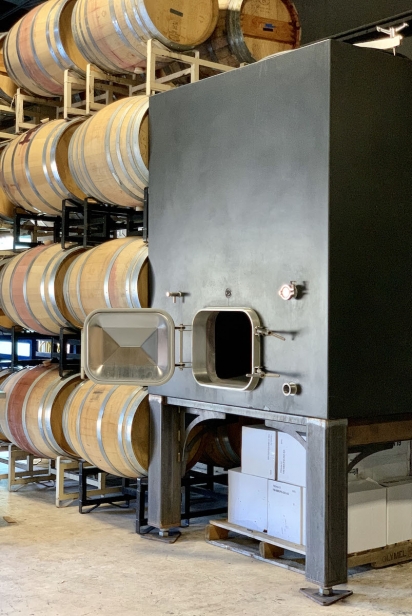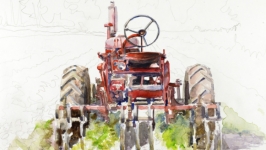From Concrete to Cork
In the beginning, there was ceramic. At least, that’s what City Center Wines sommelier Joseph DiGrigoli says about the first vessels used to age wine.
“The oldest storage vessels for wine are called amphora—or, in Georgian, qvevri —and they were used in the transport and storage of wine, and usually made of ceramic,” DiGrigoli says.
So how is it that these days, the tasting notes on nearly every Chardonnay, Cabernet and Merlot cite oak? Well, it turns out the Romans are to blame: When transporting wines in highly breakable pots became too onerous, they innovated, creating the first wooden wine barrels.
From there, oak became ubiquitous, prized not only for the way it allows oxidation but for the flavor notes it imparts, which DiGrigoli describes as vanilla and baking spice for French oak, and dill and tanning oil for American. But innovation didn’t stop, even if today it can sometimes look like going backward.
At Split Rail Winery in Garden City, Winemaker Jed Glavin pointed proudly to his Italian amphora, a massive clay pot with a stylized handle carved into the side. A small sign propped against its lid revealed it could hold 210 gallons of wine—the equivalent of three and a half barrels.
“We did order a new amphora this year too, so we got a big one that’s going to take the place of this big foeder ,” he says, gesturing to a 1,100-gallon neutral barrel crouching behind a nearby seating area. Aging wines in the amphora isn’t the only way Split Rail is pushing the boundaries of modern winemaking in pursuit of hanging onto the pure fruit flavor of the grape. It also uses concrete tanks—either to age wines or, as with the 2016 Horned Beast Mephistopheles GSM, to finish them after they’ve spent a year or more in wood—and mixes oak and acacia in its barrels, a blend Glavin said gives the winery’s 2017 Exploding Mirror Marsanne an herbal, lemony flavor.
“Full acacia barrels are really hard to find. You can order them from France, but they’re just [bleeping!] expensive and they leak really easily, so we found these ones that have American [oak] staves, and they just make the caps out of acacia,” he says, walking around to the back of the winery to show off a rack of barrels, which varied in hue from rosey to yellow.
Acacia isn’t an entirely unknown wood in wine aging. Just down the street from Split Rail’s Garden City taproom, Cinder Wines Winemaker Melanie Krause has used black locust wood—technically Robinia pseudoacacia and commonly also called acacia—to age Chardonnays since 2016. Cinder Tasting Room Manager Tyler Bradley says Krause chose black locust for its aromatics, and because it gives the wine “a different texture” than oak.
“When people try our Chardonnay, we kind of have a Chardonnay that’s in the middle for everybody,” he explains. “It’s not Chablisstyle, it’s not going to be super high-acid, but it is also not like your classic Rombauer or Kendall-Jackson, really buttery Chardonnay either, and one of the reasons it kind of meets the middle is because of that black locust wood.”
Cinder ages the rest of its white wines in stainless steel tanks, but sticks to a mix of French, Hungarian and American oaks for its reds. DiGrigoli says nonporous “neutral” vessels like stainless steel and concrete can be tricky because the lack of oxidation can cause a chemical flavor, though a conscientious winemaker can avoid those pitfalls, producing fresh, easy-drinking wines.
Back at Split Rail, Glavin agrees different vessels generate unusual mouthfeel, but says boundary-pushing styles and flavors are sometimes a hard sell in Idaho, where tastes tend to lean more conservative.
“If you want to be successful, you still need to make Cabernet and stuff that people are expecting,” he says. “We still make these traditional wines in a sense. We’re using traditional grapes, we just do little, small spins on them to keep them a little bit different.”
Still, he doesn’t plan to stop experimenting any time soon. He admitted that even when it comes to the older styles like amphora aging, there’s a lot left to learn. For one thing, he’s still trying to figure out why and how his clay pot results in a sweet liquid he says tastes like maple syrup.
“My whole mantra in here is never really to make the same wine twice, because I think that’s a little boring,” he says, adding that for his next project he just might put chestnut barrels on his shopping list.
City Center Wines | @citycenterwines
Split Rail Winery | @splitrailwinery
Cinder Wines | @cinderwines







